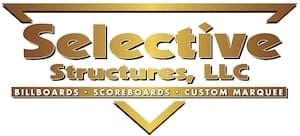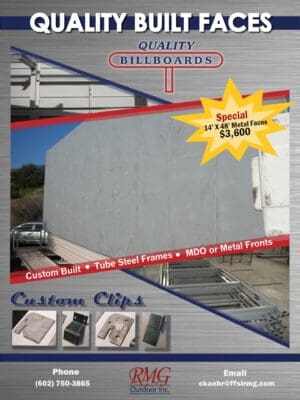
By Andy Sriubus, Chief Commercial Officer, OUTFRONT Media
After the fall of the Ottoman Empire and the establishment of the Republic of Turkey in 1923, President Mustafa Kemal Atatürk embarked on a series of sweeping changes known as the “Kemalist reforms” to modernize and secularize Turkish society. Among these developments was the overhaul of the Turkish language, which had been written in the Arabic script and heavily influenced by Persian vocabulary due to the historical legacy of the Ottoman Empire.
Atatürk recognized that the Arabic script was ill-suited to the phonetic structure of the Turkish language and hindered literacy rates among the population. He saw language reform as a crucial step in modernizing Turkey and aligning it with the Western world.
In 1928, Atatürk introduced a new Turkish alphabet based on the Latin script, with modifications to better represent Turkish phonology. This alphabet reform, known as the “New Turkish Alphabet”, aimed to make the Turkish language more accessible to the general population, facilitating literacy and education.
The transition from the Arabic script to the Latin-based alphabet was a monumental undertaking that required widespread support from the government, educational institutions, media, and the public. Textbooks, newspapers, and official documents were gradually converted to the new alphabet, and literacy campaigns were launched to educate the population.
Despite initial resistance from traditionalists, the language reform proved successful. The new alphabet simplified the process of learning to read and write Turkish, leading to an increase in literacy rates and standardized language.
The reform initiatives not only bridged the gap between Turkish society and the modern world but also facilitated communication, trade, and cultural exchange with other nations. Today, the Latin-based Turkish alphabet is widely accepted and recognized, and Turkey has emerged as a vibrant and dynamic member of the global community.
In more modern times, the Media Rating Council (“MRC”) introduced their long-anticipated measurement standards for Out of Home (“OOH”) advertising. As a US government recommended body, MRC’s mandate is to set standards, audit independent measurement products, and accredit those in compliance with their standards. Anna Bager, CEO of OAAA, announced the publication at the annual OAAA confab in Carlsbad, CA last month.
OOH advertising comprises only 4% of US purchased advertising, at a significant discount to its inherent value, in part because it lacks conventional accredited measurement products. Without a common language framework, large ad buyers are incapable of comparing OOH to alternatives within their media mix models (“MMMs”). These long-established models and data frameworks will not be modified to accommodate “off-the-run” media types. Thus, conformity is essential.
Just like language reforms in Turkey, MRC’s effort required input from several constituencies (publishers, agencies, brands, measurement gurus, etc.) and many public comment sessions. The standards establish a framework for entities wishing to originate a measurement product, for which they would need to develop their own methodologies, identify, collect, extrapolate and algorithmicize impressions or proxy data, and then apply for MRC accreditation.
For publishers, using an accredited measurement product unlocks agency HoldCo’s cross-media budgets, which are significantly larger than the allocations currently apportioned to OOH specialists. For agencies and other buyers, MRC accreditation is seen as a “Good Housekeeping seal” which is meant to weed out fraudulent products and perceived self-dealing by publishers who “mark their own homework”.
The lack of measurement standards, and thus accredited measurement products, has limited the advance and purchase of OOH ads amongst the largest and more sophisticated digital agencies and their programmatic partners. These buyers depend on reliable, granular, and reconcilable impression counts as inputs for comparative models, which assess relative value across a myriad of alternatives (mobile, display, search, CTV, etc.) within a broad campaign objective. “What isn’t measured, isn’t valued.” — Peter Drucker
Most other media is purchased on a core CPM (cost-per-thousand impressions) basis. Different source data, collection methods, extrapolations and alchemy will, of course, create different results — that’s the world of media measurement. But in order for any media form to be transacted upon through common channels, it must have a similar language design framework. MRC now provides just that.
Cost-per-click (CPC) and cost-per-action (CPA) evolve from their CPM foundations into performance criteria.
As George Ivie (CEO, Media Rating Council) stated, “we need to use terminology and equalize these things so that they interlock, and out-of-home can be included in cross-media buys.” Bringing OOH into contemporary frameworks will enable significantly greater exposure for it and make the medium tradeable.
Any diverse product set needs a “prime rate”, base currency, or universal translator through which all versions can be measured — facilitating communication and trade. Sellers must first define products by their core attributes against comparables. They can then celebrate any unique characteristics that add differentiation while showcasing how their products might meet higher standards.
The initial MRC release laid the foundation for impressions measurement via an ‘opportunity-to-see’ metric. This phase reflects a given device’s ‘viewability’ (a television, mobile device, desktop, or a billboard). A second phase will focus on ‘audience’ emphasizing a higher bar to which buyers and sellers could agree. That phase will engage the context around an ad’s delivery as a measure of attention — was the person interacting with the display at the time an ad was being pushed. As with any product, the standards will be tiered and improved with each iteration.
I hope that these standards unleash a broader interest in OOH measurement product design by industry stalwarts (Nielsen, Comscore, etc.) and enable current offerings to be accessed and accredited within MRC’s new framework. With several alternatives in hand, OOH publishers and marketers will be able to engage any number of measurement products that suit the need of a particular campaign — similar to how the rest of the ~$320 billion US ad industry works.
Chairing the MRC’s OOH committee for two years has been a labor of love. The industry owes thanks to many people and their organizations: MRC, OAAA, Amazon, ARF, ACA (Canada), BDO, Billups, BPA Worldwide, Clear Channel Outdoor, CMAC, COMMB, CUENDE Infometrics, DDI Media, Deloitte & Touche, Evergreen Media, E&Y, FreeWheel, Gas StationTV, Geopath, IBO, JC Decaux, Lamar, Nielsen, Norton Outdoor, OMG, OUTFRONT Media, Place Exchange, Publicis Media, Veridooh, and Vistar Media, amongst many others.
To receive a free morning newsletter with each day’s Billboard insider articles email info@billboardinsider.com with the word “Subscribe” in the title. Our newsletter is free and we don’t sell our subscriber list.
Paid Advertisement


















GUROOH Ltd played no part in the creation of these ‘standards’- as they fall well short of the internationally agreed and implemented standards for OOH Audience measurement.
To my knowledge Ipsos (formerly Ipsos MORI) also had no involvement.
And just like that(over many years and many people’s work), OOH is about to blow up!!!
It’s about time we got our fair share!!